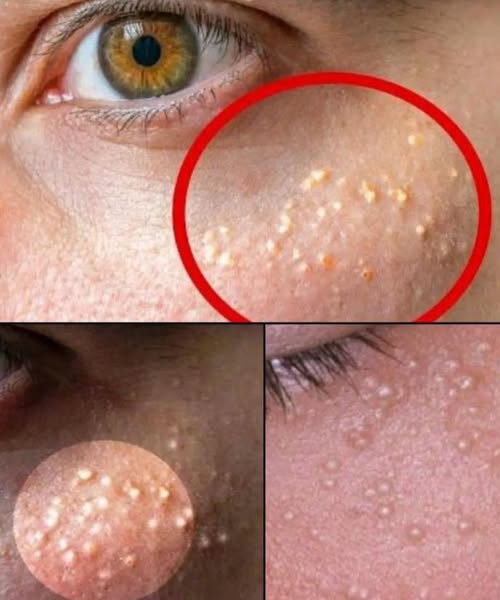Have you noticed small white bumps appearing around your eyes, cheeks, or forehead? These little spots, known as milia, are actually collections of keratin trapped just beneath the skin’s surface. While they are not dangerous, many people find them bothersome or unsightly.
Why Do Milia Appear?
Milia develop when dead skin cells get stuck beneath the new layers of skin instead of being shed as usual. As these old cells harden, they form small cysts. This process can happen for several reasons, including:
-
Skin damage from sun exposure or injury
-
Prolonged use of steroid creams or ointments
-
Genetic conditions that affect the skin
-
Certain autoimmune responses
Where Do Milia Usually Form?
These bumps can show up in many areas but are most common on the face. You might spot them:
-
On your eyelids or under your eyes
-
Across the cheeks and forehead
-
On the nose or even the chest
-
Less commonly, on the arms, legs, genitals, or inside the mouth
How Can You Treat Milia?
Milia usually do not require medical treatment, as they are harmless and sometimes disappear on their own. If you prefer to remove them for cosmetic reasons, your healthcare provider might suggest:
-
Applying an over-the-counter adapalene gel or prescription tretinoin cream
-
Surgically extracting the cyst in a medical office, using a sterile needle
-
Cryotherapy to freeze off the bumps
-
Medicated creams or antibiotics for certain forms of milia
Home Care Tips for Milia
It’s important not to squeeze or try to pop milia yourself, since this can lead to scarring or infection. Instead, here are some gentle ways to manage milia at home:
-
Clean your face daily with warm water and a mild soap, and always pat your skin dry gently
-
Use a sunscreen whenever you are outside to protect your skin
-
For adults, gentle exfoliation with an over-the-counter product may help prevent dead skin buildup
-
For babies, never use adult lotions or oils—their skin is much more sensitive
When to See a Professional
Most milia are easy to manage at home, but if you notice redness, swelling, or signs of infection, or if the bumps are causing discomfort, check with a healthcare provider. In rare cases, milia can be related to underlying skin conditions that need special attention.
By adopting a gentle skincare routine and protecting your skin from the sun, you can help reduce the chance of these little bumps appearing in the future. Sometimes, the simplest daily habits are all it takes to keep your complexion clear and smooth.
Just that
